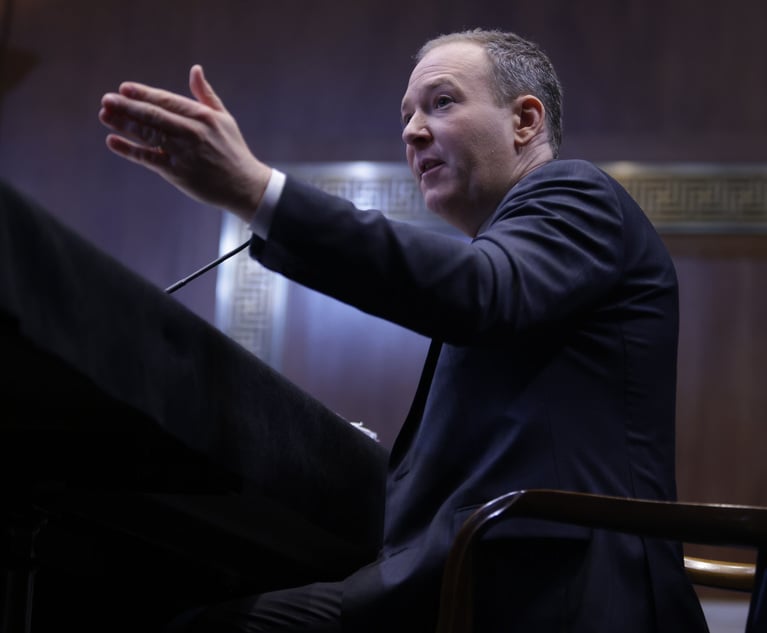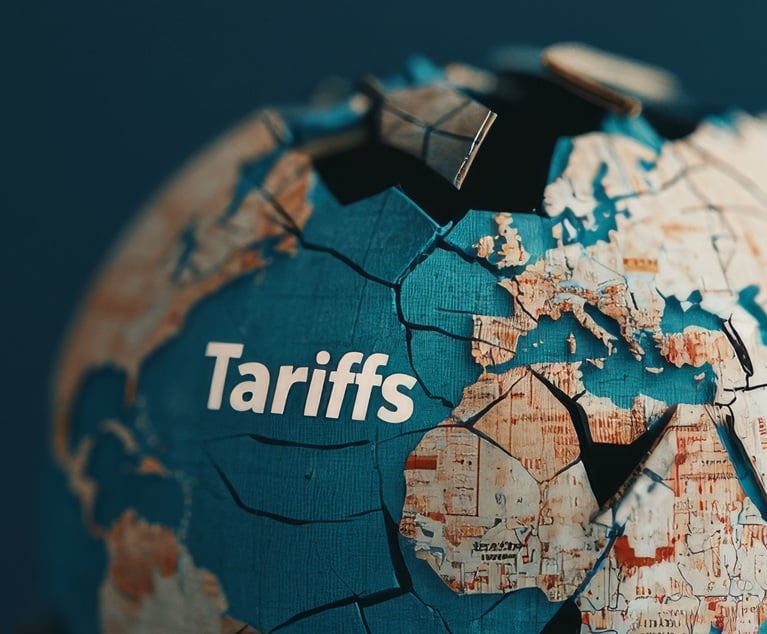 New York City Mayor-elect Eric Adams. Credit: lev radin/Shutterstock.com
New York City Mayor-elect Eric Adams. Credit: lev radin/Shutterstock.com Tensions Evident as Adams' Administration Prepares To Implement the Climate Mobilization Act
Having inherited LL97 from the prior administration, this administration faces the daunting task of developing the rules and agency infrastructure necessary to implement what is likely the most aggressive, building-focused GHG emissions reduction law in the country.
June 17, 2022 at 02:30 PM
8 minute read
The new Adams' administration faces significant work and City Council skepticism as it prepares to implement Local Law 97 of 2019 (LL97), the centerpiece of New York City's Climate Mobilization Act that has been widely hailed as the nation's most aggressive building-focused greenhouse gas emissions reduction legislation. The goal of LL97 is to drop GHG emissions by 40% by 2030 and by 80% by 2050. To accomplish this, it imposes strict caps on covered buildings beginning in 2024 and becomes increasingly stringent in five-year increments. Owners who fail to achieve the reductions face stiff penalties.
At a recent joint City Council Environmental and Housing committees oversight hearing, the administration's Chief Climate Officer and Commissioner of the city's Environmental Protection Department Rit Aggarwala tried to balance the administration's preferred pragmatic approach with city council's apparent desire for aggressive enforcement. In his opening remarks, Aggarwala affirmed the administration is committed to implementation "in the right way." The New York City Council Committee on Environmental Protection Jointly With the Committee on Housing and Buildings Remote Hearing, April 13, 2022. He said the administration's primary focus is on compliance and reduced GHG emissions, and not necessarily on levying penalties against building owners doing their best to comply. Aggarwala noted that LL97's significant penalties give the law teeth, but stressed that penalties needed to be levied "with thoughtfulness," and a recognition that the City is still recovering from the COVID-19 pandemic's impact.
This content has been archived. It is available through our partners, LexisNexis® and Bloomberg Law.
To view this content, please continue to their sites.
Not a Lexis Subscriber?
Subscribe Now
Not a Bloomberg Law Subscriber?
Subscribe Now
NOT FOR REPRINT
© 2025 ALM Global, LLC, All Rights Reserved. Request academic re-use from www.copyright.com. All other uses, submit a request to [email protected]. For more information visit Asset & Logo Licensing.
You Might Like
View All
Neighboring States Have Either Passed or Proposed Climate Superfund Laws—Is Pennsylvania Next?
7 minute read
EPA Nominee Zeldin Says Climate Change Is Real, Agency Shouldn't Suffocate Economy

'Headaches,' Opportunities Ahead for Lawyers Advising Foreign Businesses, Attorneys Say
4 minute readLaw Firms Mentioned
Trending Stories
- 1Ex-Archegos CFO Gets 8-Year Prison Sentence for Fraud Scheme
- 2Judges Split Over Whether Indigent Prisoners Bringing Suit Must Each Pay Filing Fee
- 3Law Firms Report Wide Growth, Successful Billing Rate Increases and Less Merger Interest
- 4CLOs Face Mounting Pressure as Risks Mushroom and Job Duties Expand
- 5X Faces Intense Scrutiny as EU Investigation Races to Conclusion & Looming Court Battle
Who Got The Work
J. Brugh Lower of Gibbons has entered an appearance for industrial equipment supplier Devco Corporation in a pending trademark infringement lawsuit. The suit, accusing the defendant of selling knock-off Graco products, was filed Dec. 18 in New Jersey District Court by Rivkin Radler on behalf of Graco Inc. and Graco Minnesota. The case, assigned to U.S. District Judge Zahid N. Quraishi, is 3:24-cv-11294, Graco Inc. et al v. Devco Corporation.
Who Got The Work
Rebecca Maller-Stein and Kent A. Yalowitz of Arnold & Porter Kaye Scholer have entered their appearances for Hanaco Venture Capital and its executives, Lior Prosor and David Frankel, in a pending securities lawsuit. The action, filed on Dec. 24 in New York Southern District Court by Zell, Aron & Co. on behalf of Goldeneye Advisors, accuses the defendants of negligently and fraudulently managing the plaintiff's $1 million investment. The case, assigned to U.S. District Judge Vernon S. Broderick, is 1:24-cv-09918, Goldeneye Advisors, LLC v. Hanaco Venture Capital, Ltd. et al.
Who Got The Work
Attorneys from A&O Shearman has stepped in as defense counsel for Toronto-Dominion Bank and other defendants in a pending securities class action. The suit, filed Dec. 11 in New York Southern District Court by Bleichmar Fonti & Auld, accuses the defendants of concealing the bank's 'pervasive' deficiencies in regards to its compliance with the Bank Secrecy Act and the quality of its anti-money laundering controls. The case, assigned to U.S. District Judge Arun Subramanian, is 1:24-cv-09445, Gonzalez v. The Toronto-Dominion Bank et al.
Who Got The Work
Crown Castle International, a Pennsylvania company providing shared communications infrastructure, has turned to Luke D. Wolf of Gordon Rees Scully Mansukhani to fend off a pending breach-of-contract lawsuit. The court action, filed Nov. 25 in Michigan Eastern District Court by Hooper Hathaway PC on behalf of The Town Residences LLC, accuses Crown Castle of failing to transfer approximately $30,000 in utility payments from T-Mobile in breach of a roof-top lease and assignment agreement. The case, assigned to U.S. District Judge Susan K. Declercq, is 2:24-cv-13131, The Town Residences LLC v. T-Mobile US, Inc. et al.
Who Got The Work
Wilfred P. Coronato and Daniel M. Schwartz of McCarter & English have stepped in as defense counsel to Electrolux Home Products Inc. in a pending product liability lawsuit. The court action, filed Nov. 26 in New York Eastern District Court by Poulos Lopiccolo PC and Nagel Rice LLP on behalf of David Stern, alleges that the defendant's refrigerators’ drawers and shelving repeatedly break and fall apart within months after purchase. The case, assigned to U.S. District Judge Joan M. Azrack, is 2:24-cv-08204, Stern v. Electrolux Home Products, Inc.
Featured Firms
Law Offices of Gary Martin Hays & Associates, P.C.
(470) 294-1674
Law Offices of Mark E. Salomone
(857) 444-6468
Smith & Hassler
(713) 739-1250







